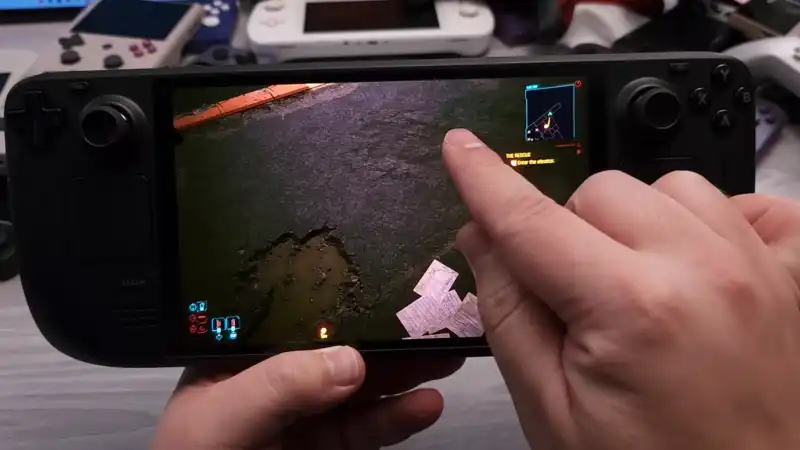Aside from tarantulas, elevators, and Jared Leto's on-screen antics, nothing on this planet bothers me more than OLED burn-in. This screen defect annoys my crazy eyes worse than dead pixels, and I have had at least one of my best gaming monitors ruined by this problem. So when I see articles about "burn-in" or "Steam Deck OLED" appearing, my heart obviously sinks. [YouTuber "The Phawx" (thanks, NotebookCheck) has discovered that Valve's updated HDR devices are indeed susceptible to OLED burn-in. But wait, no need to shed a tear just yet in front of the Deck OLED's stunning 7.4-inch display. While this handheld can suffer from physical screen burn-in (especially in HDR mode at 1000 nits), you'd have to be very unreasonable in your use of the Steam Deck OLED to leave a burn-in "afterimage" on it.
Phawx is not stupid. Quite the contrary. He is a big fan of portable gaming with comprehensive knowledge of display technology. When he creates a video showing how he "baked" the Steam Deck OLED, he absolutely knows what he is doing. What we are dealing with is not an actual use case. Instead, The Phawx goes out of his way to push the Deck OLED display to the breaking point and find out exactly when that breaking point will be.
For Valve's refreshed OLEDs, that crush point turns out to be around 750 hours. Incidentally, this equates to 31 days. Yes, the Steam Deck OLED screen literally begins to show signs of irreparable image retention after more than a month of heavy use.
And "abuse" is exactly what The Phawx did to Valve's portable PCs. The man has essentially, ahem, bricked his handhelds all in the name of "science". A certain megalomaniac "genetic life form and disk operating system" would have a party watching The Phawx video: ...... And no doubt the cake would join in.
Once again, these handheld enthusiasts are no fools. Says the Youtuber, "The application I created to test the stress on the panel is a worst-case scenario."
"I'm doing full brightness. I'm doing HDR at full brightness: ...... But my application was designed to damage the screen as much as possible, and I did a good job. I damaged the screen."In other words, there is no need to be overly concerned about the possibility of your Steam Deck OLED being ruined by burnout, if you are using it wisely.
The Phawx intentionally runs apps that permanently display the words "HDR1000", "HDRGREEN", "HDRBLUE", and "HDRRED" on the screen for hundreds of hours to cause possible irreparable damage on his handheld. Note: What makes OLED burn-in worse than anything else is static elements on the screen for hours on end. I don't like my LG G3 OLED displaying the HUD of my PS5's best game for more than 2 hours.
In his various, ludicrously long tests, it's no surprise that using the Steam Deck OLED at its peak HDR brightness of 1000 nits causes the most problems. the HDR on the Steam Deck OLED can be controlled with a slider, so reducing the brightness or playing games in SDR to play games with it, which is reasonably easy, but helps reduce irreversible image retention.
Even assuming a worst-case scenario of 750 hours, The Phawx suggests that what he sees in his video is a particularly bad case of image retention. It is theoretically fixable by going into desktop mode with Linux on the handheld, launching YouTube in a web browser, and playing a full-screen video specifically designed to eliminate image retention/potential OLED burnout.
Again, don't panic; The Phawx will allay your screen concerns with sage advice. 'Be mindful of the type of content you play,' he says. "You don't need to worry so much about image retention issues. However, if you are playing only one game, and that one game has static HUD elements present at all times, I would recommend not playing at maximum brightness all the time. If you are going to put hundreds or thousands of hours into the same game, then I would recommend limiting the brightness on the panel."
.
In short, you should not play Hades or the best Steam games on a Deck OLED for 750 hours straight. Sure, it will make the Guinness Book of World Records, but it could give your favorite handheld PC a serious screen defect that is irreparable.
Incidentally, the Nintendo Switch's OLED can withstand 3,600 hours of similarly harsh testing before burn-in becomes a problem. Good luck, Mario and his friends in the Mushroom Kingdom.
.









Comments